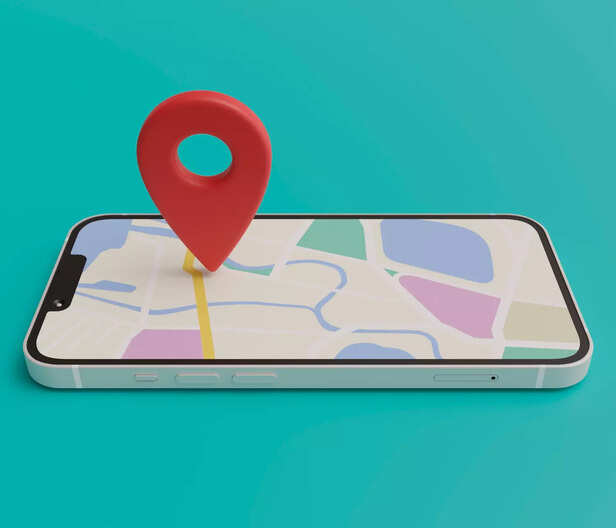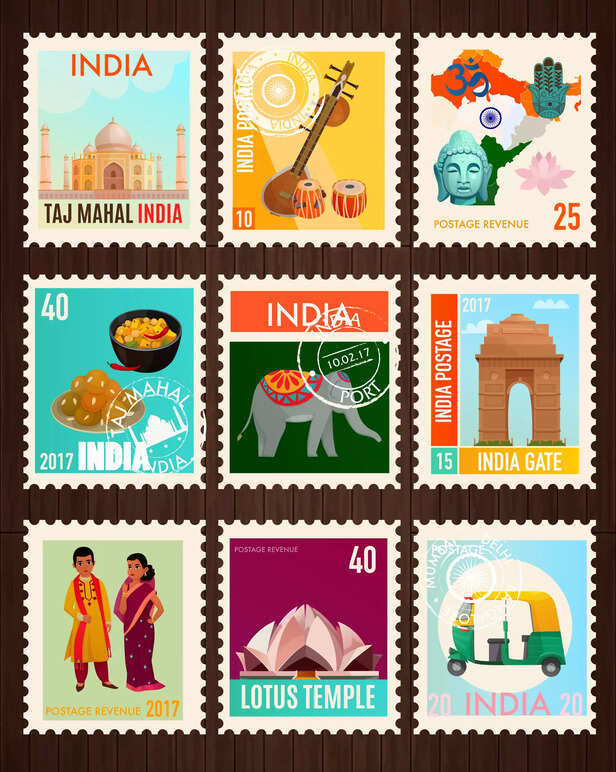No More Need for Addresses or PIN Codes—‘Digipin’ Will Show the Way! How the Postal Department’s ‘Digital Avatar’ Works
Ushnish Samadder | ANI | Jun 04, 2025, 09:00 IST
( Image credit : ANI, Timeslife )
The Indian Postal Department is launching a new addressing system where each address will have a unique digital ID. This digital ID will help locate every address quickly and accurately, marking a significant ‘digital revolution’ in mail delivery.
A unique digital ID for addresses is being introduced by the government, following Aadhaar for identity and UPI for digital transactions. This new 12-digit special PIN will revolutionize mail and parcel delivery services, says the Indian Postal Department. Instead of traditional PIN codes, an alphanumeric 12-character code will be used in this new system.
This number is called the ‘Digipin.’ The new addressing system was developed with contributions from IIT Hyderabad and ISRO. Created through their collaboration, Digipin aims to improve and build a precise digital address infrastructure for the country. In this way, the Digital Postal Index Number, or Digipin, is set to become one of the nation’s key digital governance initiatives.

Have you ever wondered what the PIN code mentioned at the end of your address is used for? A PIN code is a six-digit number assigned by India’s postal department to identify a specific area or location. The PIN code system was introduced in 1972. Some city residents complain that in the era of mobile internet, not only has the habit of writing letters declined, but the postal department has also become increasingly indifferent.
The limitations of the PIN code system are numerous. Even when the correct PIN code is provided, mail often fails to reach the intended address on time. Keeping this in mind, the Indian Postal Department is set to launch a new addressing system. Each address will have a unique digital ID, enabling faster and more accurate location of every address—ushering in a true ‘digital revolution.’
From now on, there will be no need to search for someone’s address using street, lane, or house names. Instead, the Postal Department has taken the initiative to create a suitable, geocoded address system. In this system, any location in India can be identified using Digipin. It is reported that both the PIN code and Digipin can be used to represent addresses.
Under the new system, the entire country will be divided into small sections measuring 4 meters by 4 meters. Each 16-square-foot area will be assigned a unique identifier called a Digipin. Even seas and coastal borders will be included. Every 16-square-foot part of the country will be marked with its own Digipin.This is different from the traditional PIN code system, where a single PIN code is used for a large area. Instead, the new system divides regions into smaller sections, assigning unique codes to make the delivery of letters, documents, and parcels easier. The government aims to bring underserved areas without proper addresses into the reach of official services through this initiative.

The Digipin code will be generated based on latitude and longitude coordinates. This system will make it easy to find the exact address of any street, lane, or village. In such a scenario, no courier or individual will face any difficulty reaching your address. The main goal of this system is to bring all addresses in India under one unified framework and give them an organized structure.
How can you get this unique code? To find your Digipin, first visit the official Digipin website. There, enter your full address or GPS location. The system will then generate a unique 12-character code based on your location. This will be your Digipin address.
Delivery personnel or couriers can directly reach the address by using the latitude and longitude coordinates provided in the Digipin. However, this requires a device or mobile phone equipped with a Global Navigation Satellite System (GNSS). The Postal Department has already developed a Digipin portal and app for this purpose.
A postal department official told the media that launching a digital addressing system based on geographic information will easily resolve many delivery problems. Both the general public and delivery companies will benefit from hassle-free service. This Digipin system will be especially effective in remote rural areas.

Government data shows that due to the lack of proper addresses, losses incurred by customers and delivery companies range from $100 million to $400 million. This new system can play a crucial role in preventing time and financial wastage. The Postal Department believes that once the digital PIN system is implemented, remote areas will gain better access to government services, healthcare, and various economic benefits.
In remote areas like forests and mountainous regions, postal delivery can sometimes take more than 20-25 days. Residents of hilly states such as Uttarakhand, Himachal Pradesh, and Kashmir are well acquainted with this problem. In rural parts of India, there are even places without house numbers, where deliveries are made using residents’ names and specific landmarks.
It is officially known that this system is initially planned to be implemented on a trial basis. The central government has made significant progress in this project. Gradually, based on public feedback, the government will move forward to implement it nationwide.
Another positive aspect of launching Digipin could be its privacy. Individuals will receive their Digipin only if they personally choose to share it with delivery companies and their staff. E-commerce and delivery companies will not be able to collect and sell addresses without consent. Many believe that implementing the digital PIN system will help curb the misuse of unregulated addresses.
Explore the latest trends and tips in Health & Fitness, Travel, Life Hacks, Fashion & Beauty, and Relationships at Times Life!
This number is called the ‘Digipin.’ The new addressing system was developed with contributions from IIT Hyderabad and ISRO. Created through their collaboration, Digipin aims to improve and build a precise digital address infrastructure for the country. In this way, the Digital Postal Index Number, or Digipin, is set to become one of the nation’s key digital governance initiatives.

Centre launches 2 digital platforms to modernise India's addressing system
( Image credit : IANS )
Have you ever wondered what the PIN code mentioned at the end of your address is used for? A PIN code is a six-digit number assigned by India’s postal department to identify a specific area or location. The PIN code system was introduced in 1972. Some city residents complain that in the era of mobile internet, not only has the habit of writing letters declined, but the postal department has also become increasingly indifferent.
The limitations of the PIN code system are numerous. Even when the correct PIN code is provided, mail often fails to reach the intended address on time. Keeping this in mind, the Indian Postal Department is set to launch a new addressing system. Each address will have a unique digital ID, enabling faster and more accurate location of every address—ushering in a true ‘digital revolution.’
From now on, there will be no need to search for someone’s address using street, lane, or house names. Instead, the Postal Department has taken the initiative to create a suitable, geocoded address system. In this system, any location in India can be identified using Digipin. It is reported that both the PIN code and Digipin can be used to represent addresses.
Under the new system, the entire country will be divided into small sections measuring 4 meters by 4 meters. Each 16-square-foot area will be assigned a unique identifier called a Digipin. Even seas and coastal borders will be included. Every 16-square-foot part of the country will be marked with its own Digipin.This is different from the traditional PIN code system, where a single PIN code is used for a large area. Instead, the new system divides regions into smaller sections, assigning unique codes to make the delivery of letters, documents, and parcels easier. The government aims to bring underserved areas without proper addresses into the reach of official services through this initiative.

GPS System
The Digipin code will be generated based on latitude and longitude coordinates. This system will make it easy to find the exact address of any street, lane, or village. In such a scenario, no courier or individual will face any difficulty reaching your address. The main goal of this system is to bring all addresses in India under one unified framework and give them an organized structure.
How can you get this unique code? To find your Digipin, first visit the official Digipin website. There, enter your full address or GPS location. The system will then generate a unique 12-character code based on your location. This will be your Digipin address.
Delivery personnel or couriers can directly reach the address by using the latitude and longitude coordinates provided in the Digipin. However, this requires a device or mobile phone equipped with a Global Navigation Satellite System (GNSS). The Postal Department has already developed a Digipin portal and app for this purpose.
A postal department official told the media that launching a digital addressing system based on geographic information will easily resolve many delivery problems. Both the general public and delivery companies will benefit from hassle-free service. This Digipin system will be especially effective in remote rural areas.

Stamps
Government data shows that due to the lack of proper addresses, losses incurred by customers and delivery companies range from $100 million to $400 million. This new system can play a crucial role in preventing time and financial wastage. The Postal Department believes that once the digital PIN system is implemented, remote areas will gain better access to government services, healthcare, and various economic benefits.
In remote areas like forests and mountainous regions, postal delivery can sometimes take more than 20-25 days. Residents of hilly states such as Uttarakhand, Himachal Pradesh, and Kashmir are well acquainted with this problem. In rural parts of India, there are even places without house numbers, where deliveries are made using residents’ names and specific landmarks.
It is officially known that this system is initially planned to be implemented on a trial basis. The central government has made significant progress in this project. Gradually, based on public feedback, the government will move forward to implement it nationwide.
Another positive aspect of launching Digipin could be its privacy. Individuals will receive their Digipin only if they personally choose to share it with delivery companies and their staff. E-commerce and delivery companies will not be able to collect and sell addresses without consent. Many believe that implementing the digital PIN system will help curb the misuse of unregulated addresses.
Explore the latest trends and tips in Health & Fitness, Travel, Life Hacks, Fashion & Beauty, and Relationships at Times Life!
